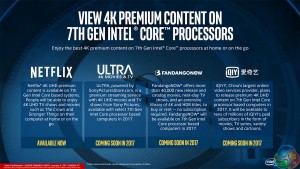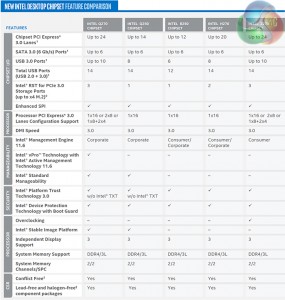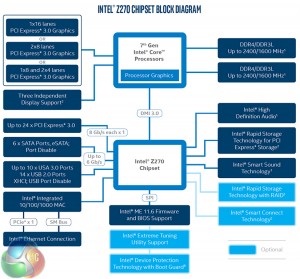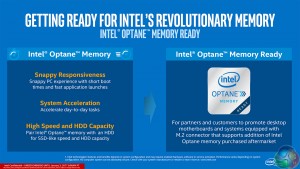So, what exactly is new with Kaby Lake other than its iGPU? Well there are two overclocking tricks which are likely to prove useful. First is a BCLK-aware voltage/frequency curve which effectively allows the CPU to run at a given frequency with a more optimised voltage than the Skylake predecessor would, in theory.
There's also the AVX offset ratio which is also present on Broadwell-E CPUs. This allows the CPU to operate at a user-defined frequency when overclocked, but then back off by a chosen number of multiplier ratios when an AVX workload is applied.
This is a smart feature as AVX-based workloads can put greater (different) stress on the CPU than those of an SSE variety and represent a challenge in achieving 24/7 stability. You may find with Kaby Lake that your chip is generally stable at a 5.0GHz but AVX software cripples your system into a BSOD past 4.8GHz. In this case, the CPU could be set to operate at 5.0GHz but then a -2x multiplier AVX offset would back the clock speed down to 4.8GHz. This would enhance stability for AVX-based workloads without reducing performance for other operations (which can run at the higher frequency).
One of Kaby Lake's most noteworthy features is its ability to play a variety of 4K streaming content using the iGPU. In fact, you need Kaby Lake to stream 4K content using Netflix on a PC. Intel's HD 630 GPU found in Kaby Lake features an improved media engine with hardware support for the VP9 codec and HEVC 10-bit.
Infuriating as it may be to desktop enthusiasts, the HD 630 iGPU's ability to stream 4K content is good for SFF media players and laptops. Of course, that doesn't help purchasers of K-series SKUs who will almost certainly use a dedicated graphics card in their system.
Subtle changes have been made to the Z270 chipset launching alongside Kaby Lake. The maximum number of PCIe 3.0 lanes from the chipset is increased to 24, up from Z170's 20. There's still a limitation to how many PCIe lanes can be allocated alongside a specific number of SATA and USB 3.0 lanes. The point is that four more PCIe 3.0 links effectively gives motherboard vendors freedom to add in a secondary M.2 PCIe 3.0 x4-capable slot ‘free of charge' without stealing valuable CPU PCIe lanes.
Three independent displays are still supported by Z270 and Intel RST still supports up to 3 PCIe 3.0 storage ports (up to x4 bandwidth). DDR4 and DDR3L are both technically support by the chipset but it is highly unlikely that vendors will release Z270 boards which support DDR3 memory rather than DDR4.
Z270 also supports Intel's new Optane Memory technology. Intel has been very unclear with details on Optane Memory and seemed very reluctant to answer direct questions relating to the feature.
The feature seems to be somewhat similar to Smart Response Technology (SRT) introduced with the Z68 chipset which allowed an SSD to act as a cache device for a larger mechanical HDD. This solution potentially looks to be taking that one step further by using an Optane-based device to cache a larger mechanical or NAND flash storage drive. Alternatively, this could just be SRT rebranded under a new guise to reflect the adoption of small but fast M.2 SSDs.
If that latter point is true, it wouldn't be particularly surprising. SRT was largely laughed out of the marketplace by an enthusiast audience that quickly identified its flaws (yes, because everybody wants to open their content 5 times so that it can finally get a speed boost!) in addition to falling NAND pricing making adequately-large SSDs more affordable.
Be sure to check out our sponsors store EKWB here
 KitGuru KitGuru.net – Tech News | Hardware News | Hardware Reviews | IOS | Mobile | Gaming | Graphics Cards
KitGuru KitGuru.net – Tech News | Hardware News | Hardware Reviews | IOS | Mobile | Gaming | Graphics Cards







